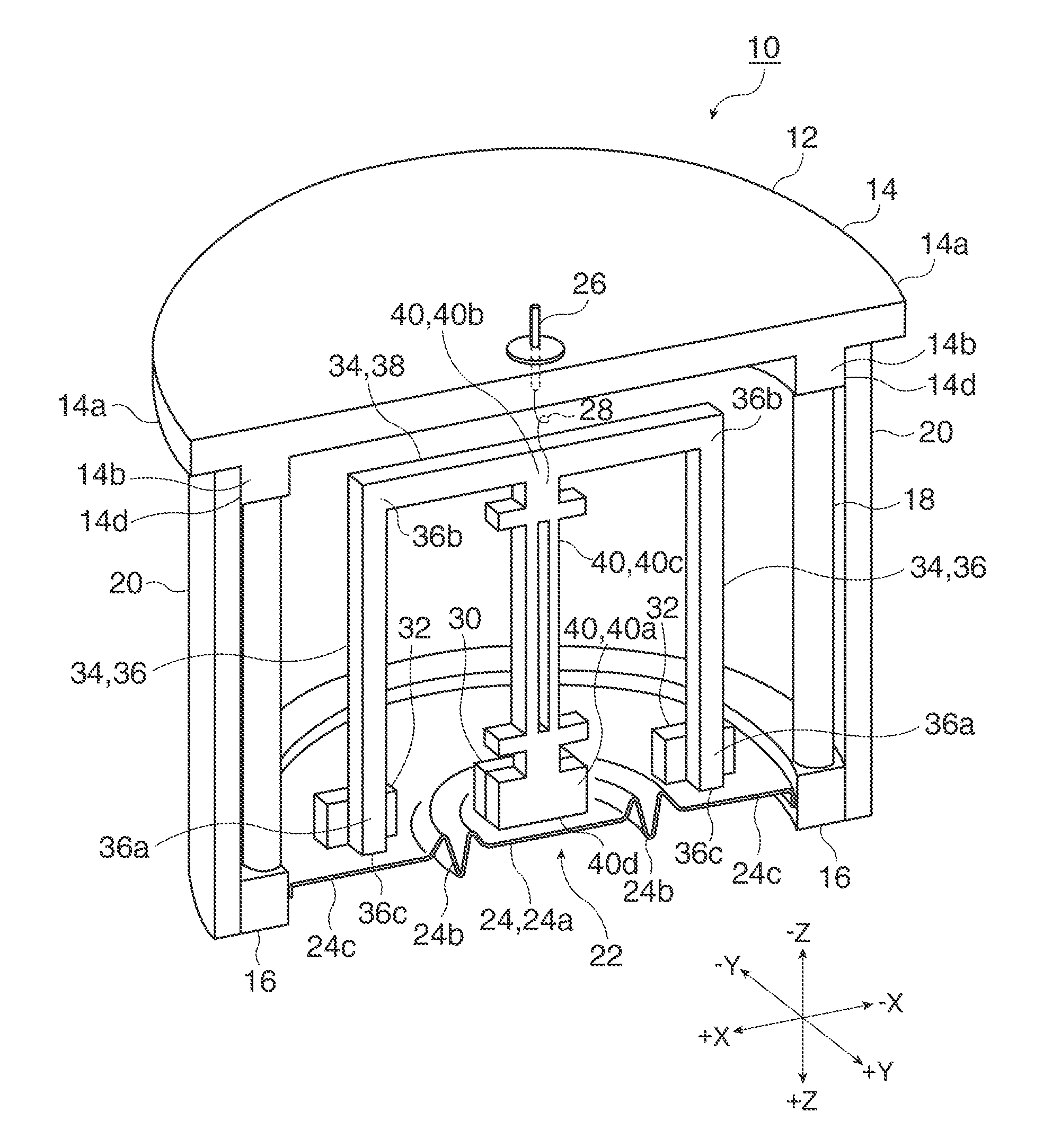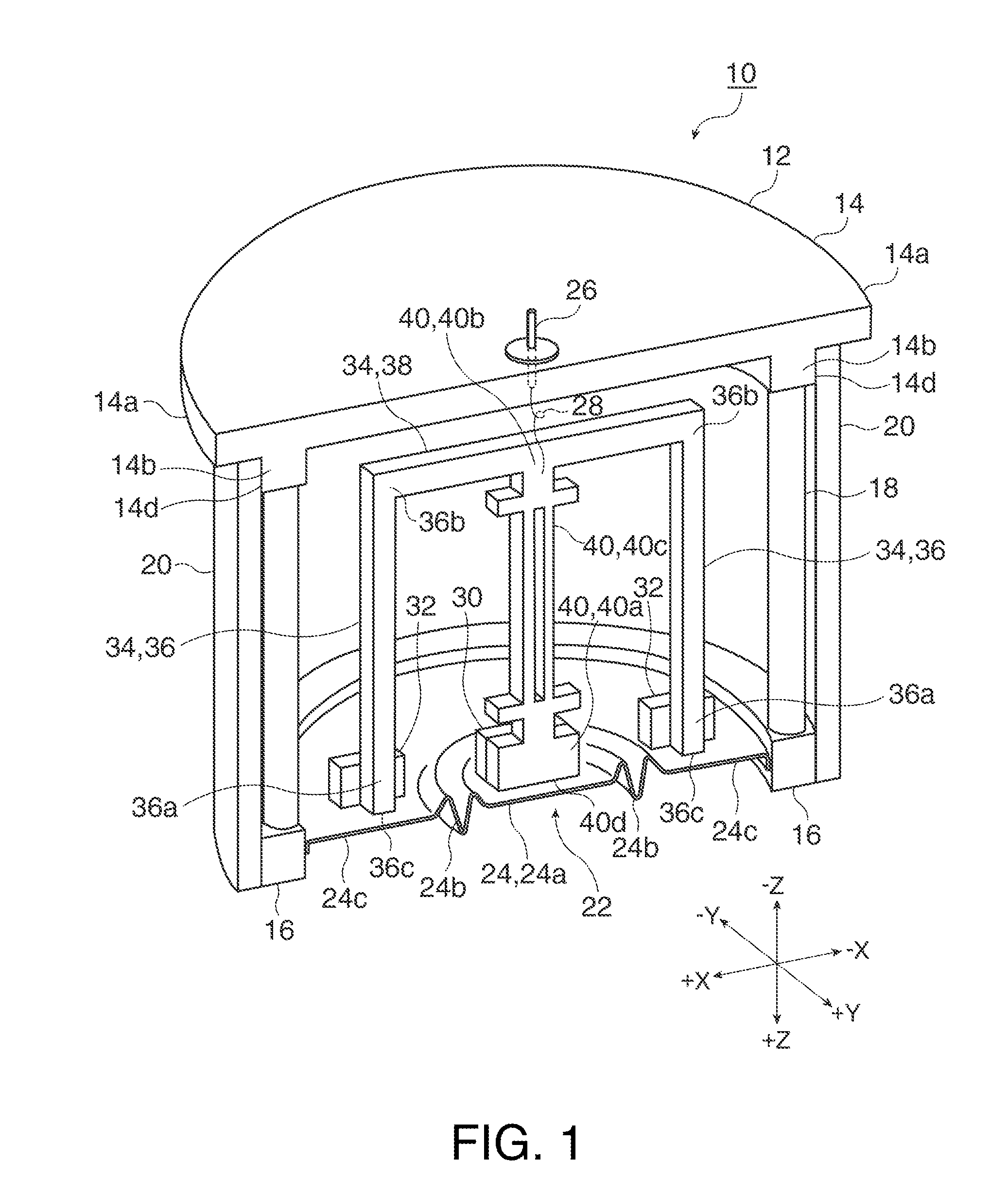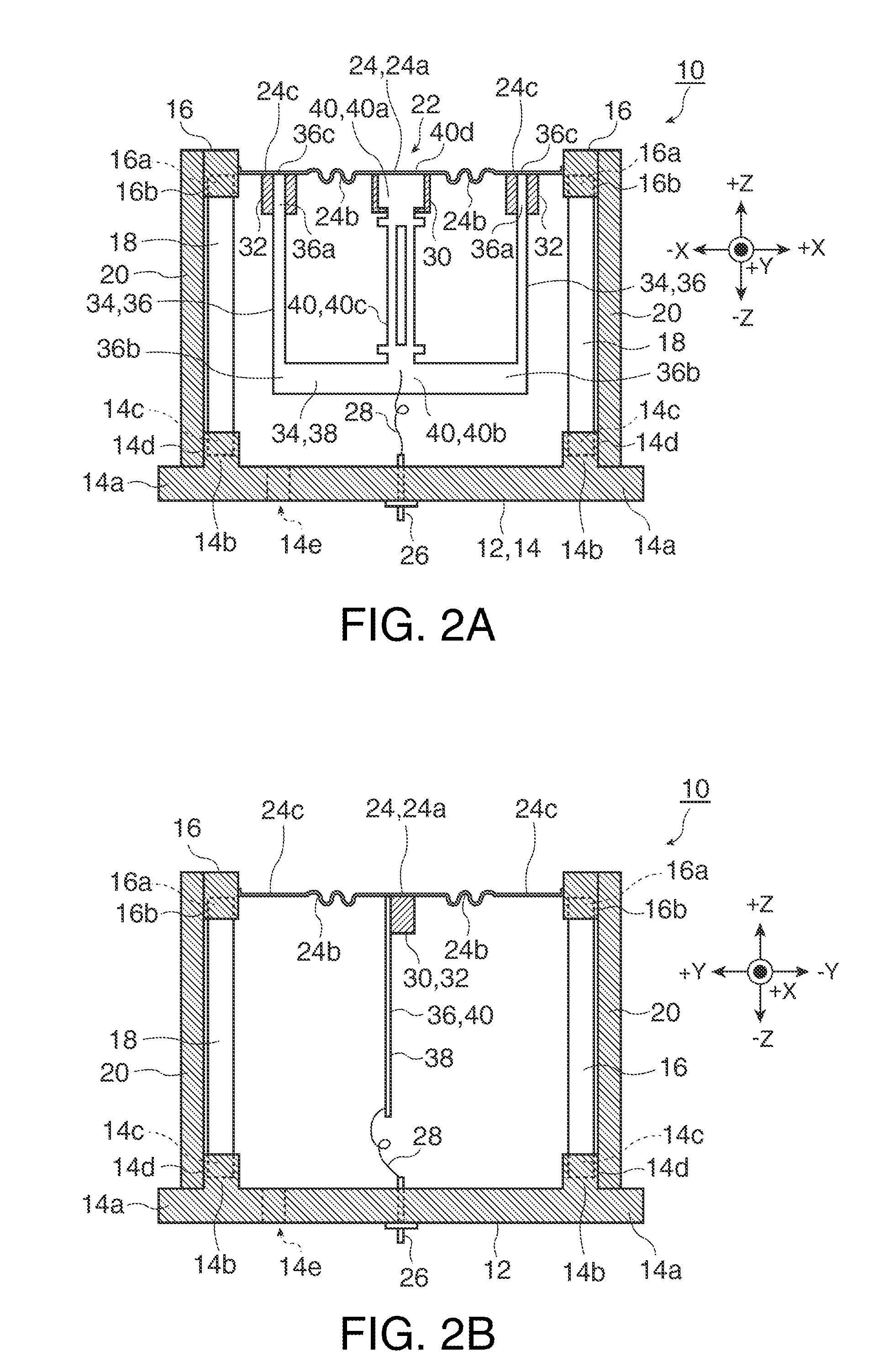Pressure sensor
a technology of pressure sensor and pressure sensor, which is applied in the direction of fluid pressure measurement, variable capacitor, instruments, etc., can solve the problems of insufficient elimination of thermal deformation effect, difficult to accurately measure pressure, and frequency chang
- Summary
- Abstract
- Description
- Claims
- Application Information
AI Technical Summary
Benefits of technology
Problems solved by technology
Method used
Image
Examples
first embodiment
[0054]FIG. 1 is a perspective cross-sectional view of a pressure sensor according to a first embodiment, taken along the XZ plane. FIGS. 2A and 2B are cross-sectional views of the pressure sensor according to the first embodiment, taken along the XZ and YZ planes, respectively. Here, the X, Y, and Z axes shown in FIGS. 1, 2A, and 2B constitute an orthogonal coordinate system, and the same is applied to the drawings referred to hereinafter. A pressure sensor 10 according to the first embodiment includes a housing 12 and a diaphragm 24 which serve as a container. A shock absorbing portion 36 and a beam portion 38 which constitute a frame 34, a pressure sensitive element 40, and the like are accommodated in the accommodation space of the container having the diaphragm 24. Moreover, when the inside of the housing 12 is opened to the atmosphere, for example, the pressure sensor 10 can be used as a fluid pressure sensor that receives fluid pressure from outside the diaphragm 24 with refer...
second embodiment
[0101]A pressure sensor according to a second embodiment is shown in FIGS. 6, 7A, and 7B. FIG. 6 is a perspective cross-sectional view of the pressure sensor according to the second embodiment, taken along the XZ plane. FIGS. 7A and 7B are cross-sectional views of the pressure sensor according to the second embodiment, taken along the XZ and YZ planes, respectively.
[0102]A pressure sensor 50 according to the second embodiment is basically similar to that of the first embodiment, but is different in that the frame (a shock absorbing portion 52 and a beam portion 54) and a pressure sensitive element 56 are separately formed and are connected by an adhesive agent or the like. In the following description, the same constituent elements as those of the first embodiment will be denoted by the same reference numerals, and detailed description thereof will be omitted unless necessary.
[0103]In the second embodiment, the beam portion 54 is formed of a material having the same thermal expansio...
third embodiment
[0107]FIGS. 10A and 10B show cross-sectional views of a pressure sensor according to a third embodiment, taken along the XZ and YZ planes, respectively. The pressure sensor 70 according to the third embodiment is basically similar to that of the first and second embodiments but is different in that the shock absorbing portion 36 is connected to the side of a diaphragm 86 of a housing 72. Although the present embodiment will be described by way of the frame 34 and the pressure sensitive element 40 used in the first embodiment, the present embodiment can be applied to the shock absorbing portion 52, the beam portion 54, and the pressure sensitive element 56 of the second embodiment. Moreover, the present embodiment is used when the rigidity of the peripheral portion of the diaphragm 24 of the first embodiment is not sufficient for pressure from the outside. That is, in the present embodiment, since the shock absorbing portion 36 (52) is connected to a housing having high rigidity as d...
PUM
| Property | Measurement | Unit |
|---|---|---|
| force | aaaaa | aaaaa |
| pressure | aaaaa | aaaaa |
| length | aaaaa | aaaaa |
Abstract
Description
Claims
Application Information
 Login to View More
Login to View More - R&D
- Intellectual Property
- Life Sciences
- Materials
- Tech Scout
- Unparalleled Data Quality
- Higher Quality Content
- 60% Fewer Hallucinations
Browse by: Latest US Patents, China's latest patents, Technical Efficacy Thesaurus, Application Domain, Technology Topic, Popular Technical Reports.
© 2025 PatSnap. All rights reserved.Legal|Privacy policy|Modern Slavery Act Transparency Statement|Sitemap|About US| Contact US: help@patsnap.com



